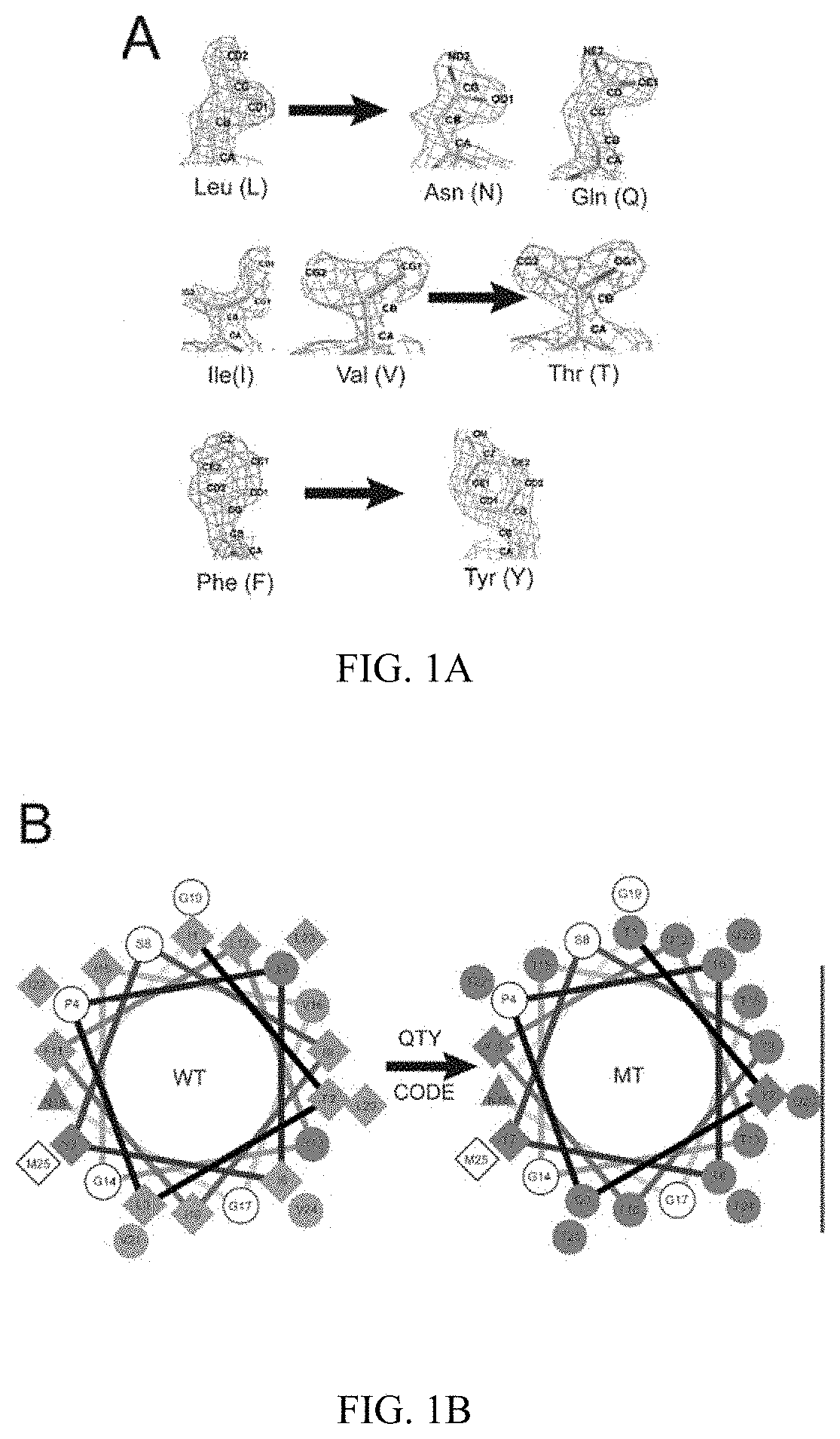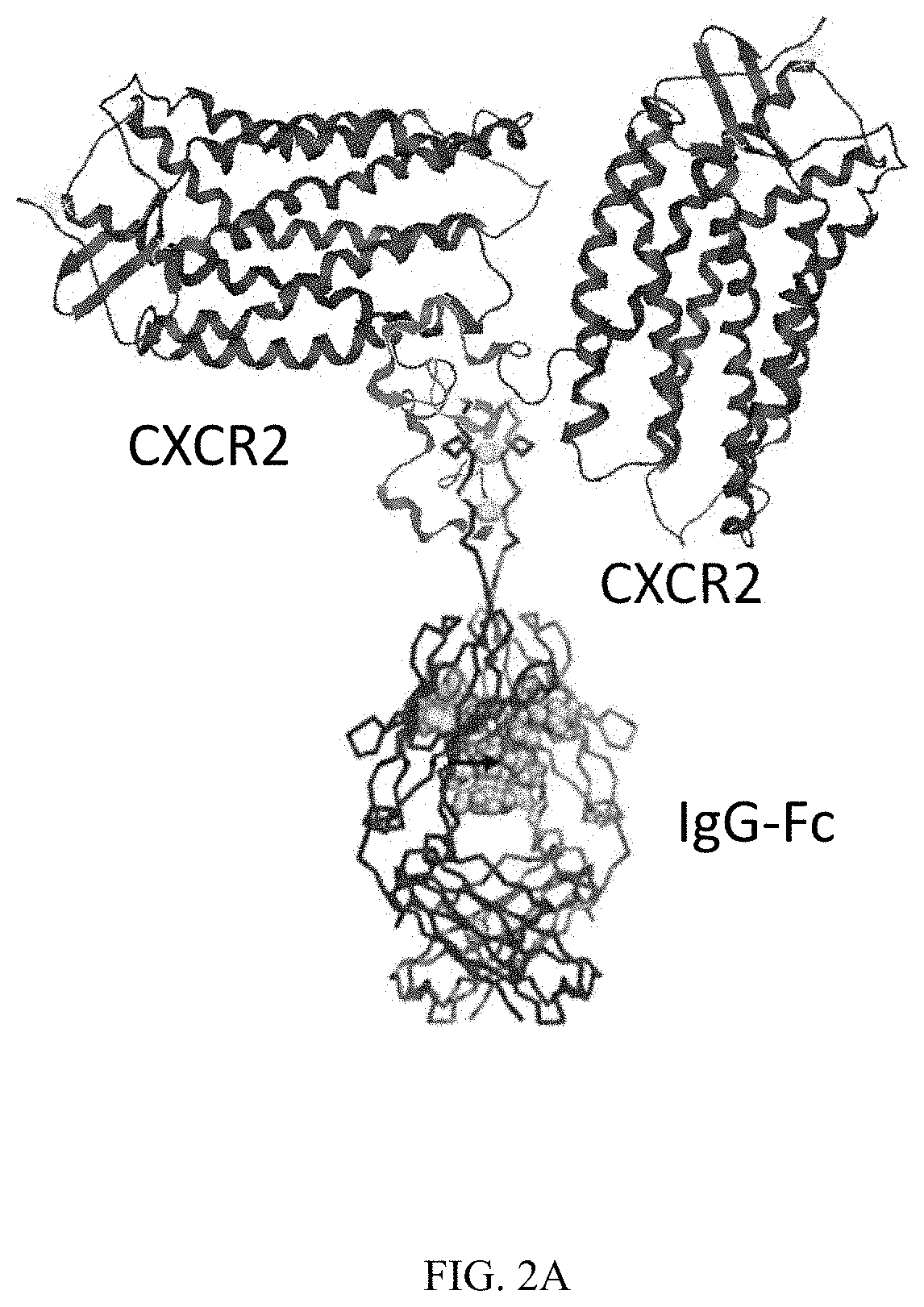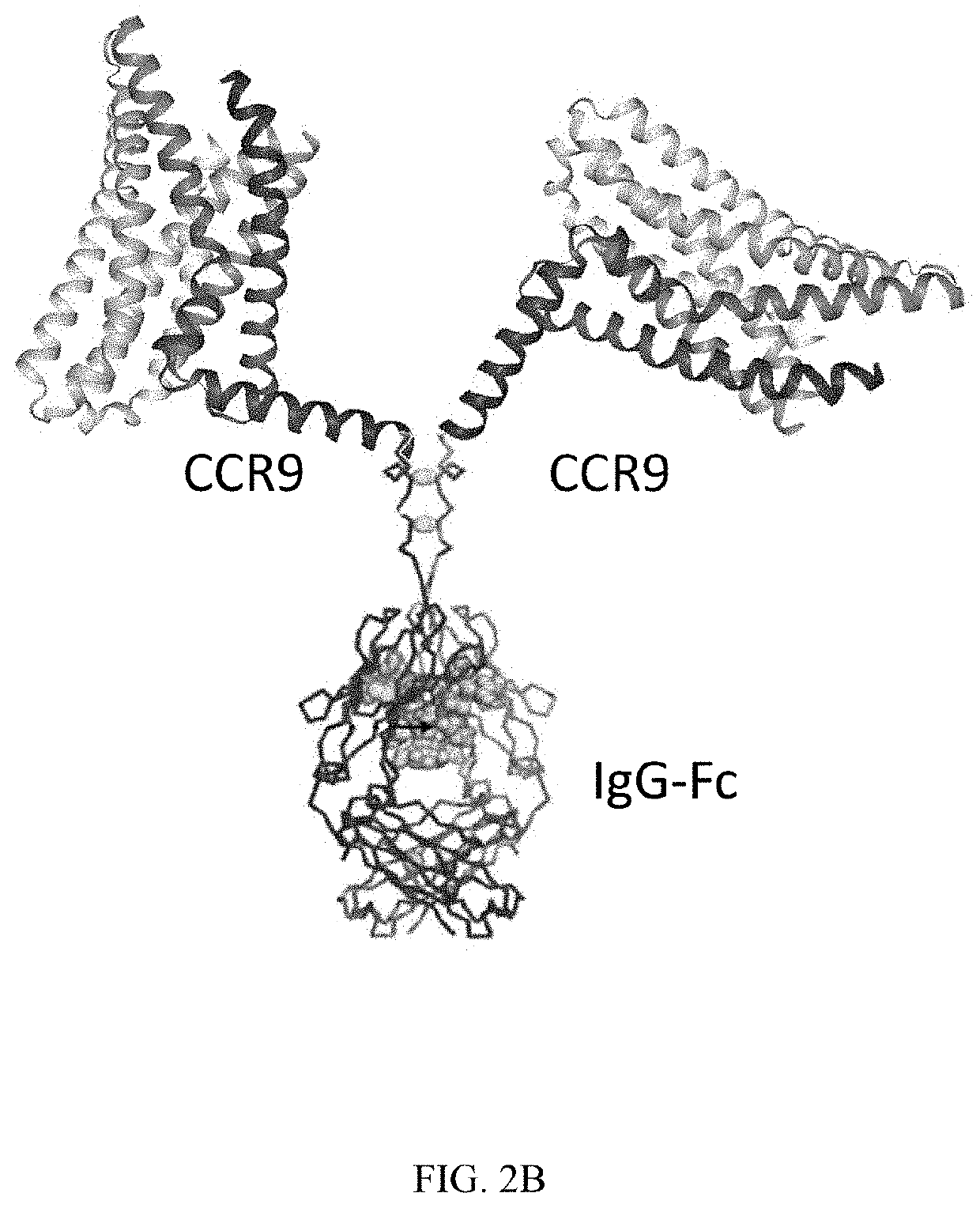QTY FC fusion receptor proteins
a fusion receptor and protein technology, applied in the field of cellular immunotherapy, can solve the problems of systemic inflammation response, potential death of patients, and inability to control the reaction, and achieve the effect of promoting utilization, regulating the water solubility of redesigned membrane proteins, and promoting their utilization
- Summary
- Abstract
- Description
- Claims
- Application Information
AI Technical Summary
Benefits of technology
Problems solved by technology
Method used
Image
Examples
Embodiment Construction
[0015]A description of preferred embodiments of the invention follows.
[0016]The invention encompasses a modified, synthetic, and / or non-naturally occurring, α-helical domain(s) and water-soluble polypeptide (e.g., “GPCRQTY”) comprising such modified α-helical domain(s), wherein the modified α-helical domain(s) comprise an amino acid sequence in which a plurality of hydrophobic amino acid residues (L, I V, F) within a α-helical domain of a native membrane protein are replaced with hydrophilic, non-ionic amino acid residues (Q, T, T, Y, respectively, or “Q, T, Y”) and / or N and S. The invention also encompasses a method of preparing a water-soluble polypeptide comprising replacing a plurality of hydrophobic amino acid residues (L, I V, F) within the α-helical domain(s) of a native membrane protein with hydrophilic, non-ionic amino acid residues (Q, T, Y). The invention additionally encompasses a polypeptide prepared by replacing a plurality of hydrophobic amino ...
PUM
| Property | Measurement | Unit |
|---|---|---|
| concentration | aaaaa | aaaaa |
| pH | aaaaa | aaaaa |
| pH | aaaaa | aaaaa |
Abstract
Description
Claims
Application Information
 Login to View More
Login to View More - R&D
- Intellectual Property
- Life Sciences
- Materials
- Tech Scout
- Unparalleled Data Quality
- Higher Quality Content
- 60% Fewer Hallucinations
Browse by: Latest US Patents, China's latest patents, Technical Efficacy Thesaurus, Application Domain, Technology Topic, Popular Technical Reports.
© 2025 PatSnap. All rights reserved.Legal|Privacy policy|Modern Slavery Act Transparency Statement|Sitemap|About US| Contact US: help@patsnap.com



